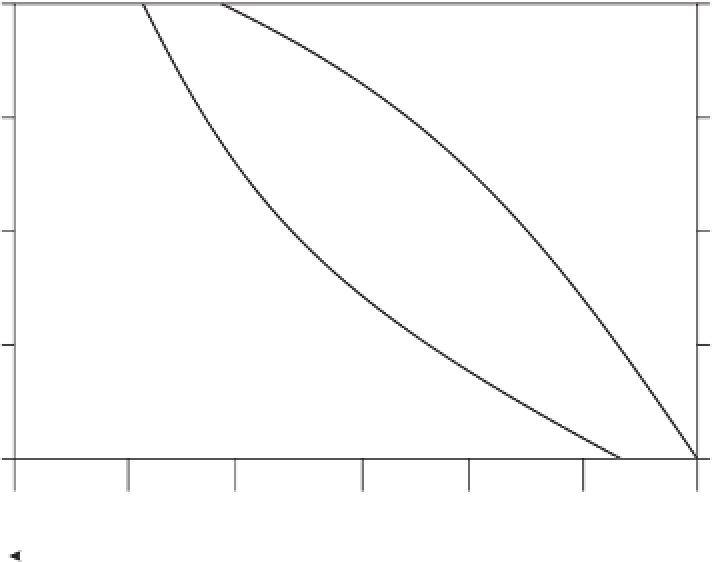Geology Reference
In-Depth Information
100
0
Historical
explanations
50
50
Modern
explanations
0
100
Sediment
movement
Bedforms
River channel
morphology
Drainage
networks
Major folds
and faults
Mountain
ranges
Size and age
Small
and young
Medium and
middle-aged
Large
and old
Figure 1.14
The components of historical explanation needed to account for geomorphic events of increasing size and
age. The top right of the diagram contains purely historical explanations, while the bottom left contains purely modern
explanations. The two explanations overlap in the middle zone, the top curve showing the maximum extent of modern
explanations and the lower curve showing the maximum extent of historical explanations.
Source
: After Schumm (1985b, 1991, 53)
that those differences greatly influence the interpretation
of past processes. So, before the evolution of land plants,
and especially the grasses, the processes of weathering,
erosion, and deposition would have occurred in a dif-
ferent context, and Palaeozoic deserts, or even Permian
deserts, may not directly correspond to modern deserts.
The second substantive claim concerns the rate of Earth
surface processes, two extreme views being
gradualism
and
catastrophism
(p. 21). The third substantive claim
concerns the changing state of the Earth's surface,
steady-
statism
arguing for a more or less constant state, or at least
cyclical changes about a comparatively invariant mean
state, and
directionalism
arguing in favour of directional
changes.
Uniformitarianism
is a widely used, but too often
loosely used, term in geomorphology. A common mis-
take is to equate uniformitarianism with actualism.
Uniformitarianism was a system of assumptions about
Earth history argued by Charles Lyell, the nineteenth-
century geologist. Lyell articulately advocated three 'uni-
formities', as well as the uniformity of law: the uniformity
of process (actualism), the uniformity of rate (grad-
ualism), and the uniformity of state (steady-statism).
Plainly, extended to geomorphology, uniformitarianism,
as introduced by Lyell, is a set of beliefs about Earth
surface processes and states. Other sets of beliefs are
possible. The diametric opposite of Lyell's uniformitar-
ian position would be a belief in the non-uniformity
of process (non-actualism), the non-uniformity of rate
(catastrophism), and the non-uniformity of state (direc-
tionalism). All other combinations of assumption are
possible and give rise to different 'systems of Earth his-
tory' (Huggett 1997a). The various systems may be tested
against field evidence. To be sure, directionalism was




